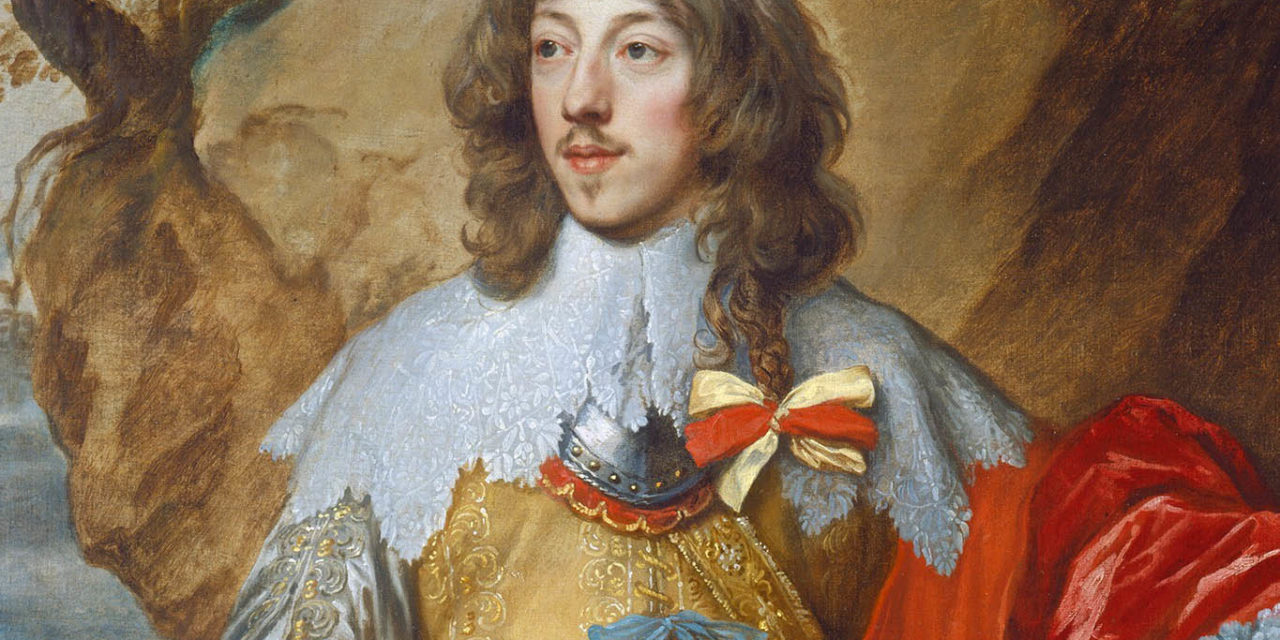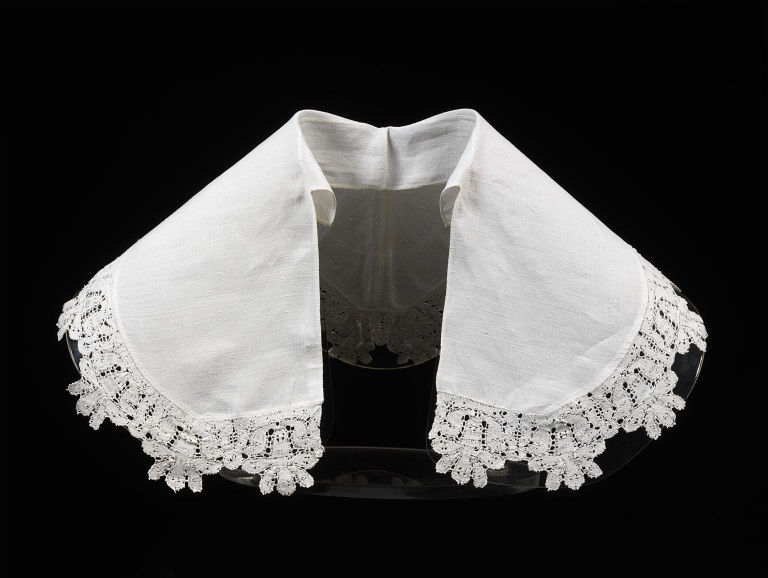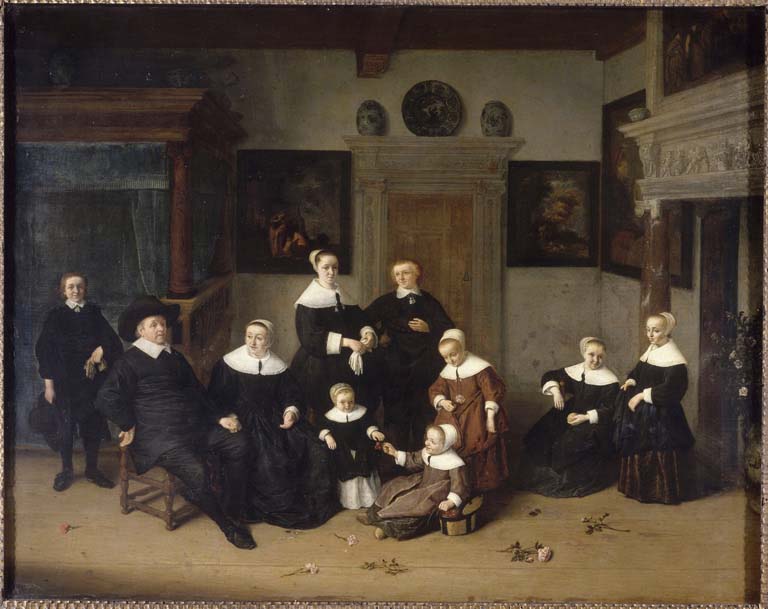A flat and broad white collar often with lace on the edges, worn by men and women in the 17th century.
The Details
While falling bands (Fig. 1) were occasionally worn by women in the seventeenth century, they were primarily a fashionable accessory for men (Cumming 77). While they are often referred to as ‘falling collars,’ ‘band’ is the proper period term (Doering 199). In Costume History and Style (1983), Douglas A. Russel defines the falling band:
“Falling band: Wide, flat collar, known as the Louis XIII collar, of sheer white fabric, with or without lace edge. Bands diminished in size from about 1640.” (494)
Falling bands were very large in the 1620s and 1630s. The lace was all hand-made, and might be made with bobbins or needles (Fig. 2).
In What People Wore When (2008), Melissa Leventon describes their size and material:
“[In the 1640s] The falling-band collar is still broad enough to cover his shoulders.” (141)
“Referred to as the falling band, this length of fabric was composed of several layers of lightly pleated lawn and was often trimmed with lace and embroidery. Simpler styles in band collars emerged around the middle of the century.” (306)
Indeed, the 1640s band worn by the man in figure 3 is somewhat smaller than the 1630s example in figure 2, and the 1650s men in figure 4 have even smaller ones. Falling bands were often paired with large cuffs of the same design (Fig. 2).
In A Dictionary of Costume and Fashion: Historic and Modern (1999), Mary Brooks Picken notes that it had several names:
“Falling band. Wide collar turned down over shoulders; usually of linen or other fine fabric, often lace-trimmed. Worn by men during 17th century after accession of Charles I in 1625. Also called Vandyke and, in France, Louis XIII collar.” (72-73)
This kind of collar came out of the transition in fashion from the stiff ruff and rebato to falling ruffs and bands in the early part of the 17th century. The collar, often starched for stiffness, was stitched on to the shirt or doublet or tied and could be removed for laundering.
In her article “Neckwear, Men’s, 1600-1714,” (2016) Mary D. Doering describes these fashionable accessories:
“Unlike the artificially stiffened and crimped ruffs, falling collars or bands rested gracefully across the shoulders. They were generally made from fine Dutch or Flemish linen and served as an ideal vehicle for the display of lavish lace trimming, a very valuable commodity.… They were worn by men of fashion in Europe and North America between 1660 and 1680.” (199)
Fig. 1 - Designer unknown (England). Band, 1630-1650. Linen, bobbin lace, linen thread, hand sewing; height 27, width 76.2 cm. London: Victoria & Albert Museum, T.21-1922. Source: VAM
Fig. 2 - Anthony van Dyck (Dutch, 1599-1641). Henri II de Lorraine, 1634. Oil on canvas; 204.6 x 123.8 cm. Washington DC: National Gallery of Art, 1947.14.1. Gift of Cornelius Vanderbilt Whitney. Source: National Gallery of Art
Fig. 3 - Bartholomeus van der Helst (Dutch, 1613 – 1670). Portrait of Gerard Andriesz Bicker, ca. 1642. Oil on panel; 94 x 70.5 cm. Amsterdam: Rijksmuseum, SK-A-147. Source: Rijksmuseum
Fig. 4 - Adriaen van Ostade (Dutch, 1610-1685). Family portrait, 1654. Oil on canvas; 70 x 88 cm. Paris: Musée du Louvre, INV. 1679. Collection de Louis XVI; acquis en Hollande, 1785. Source: Louvre
References:
- Cumming, Valerie, Phillis Cunnington, and C. Willett Cunnington. The Dictionary of Fashion History. Oxford: Berg, 2010. http://www.worldcat.org/oclc/751449764
- Doering, Mary D. “Neckwear, Men’s, 1600-1714,” in Clothing and Fashion: American Fashion from Head to Toe. José Blanco, Mary D. Doering, Patricia Hunt-Hurst, and Heather Vaughan Lee, eds. Santa Barbara, California: ABC-CLIO, 2016. http://www.worldcat.org/oclc/904505699
- Leventon, Melissa. What People Wore When: A Complete Illustrated History of Costume from Ancient Times to the Nineteenth Century for Every Level of Society. New York: St. Martins Griffin, 2008. http://www.worldcat.org/oclc/963844217
- Picken, Mary Brooks. A Dictionary of Costume and Fashion: Historic and Modern. Mineola, NY: Dover, 1999. http://www.worldcat.org/oclc/921113858
- Russell, Douglas A. Costume History and Style. Englewood Cliffs, NJ: Prentice-Hall, 1983. http://www.worldcat.org/oclc/8476952














